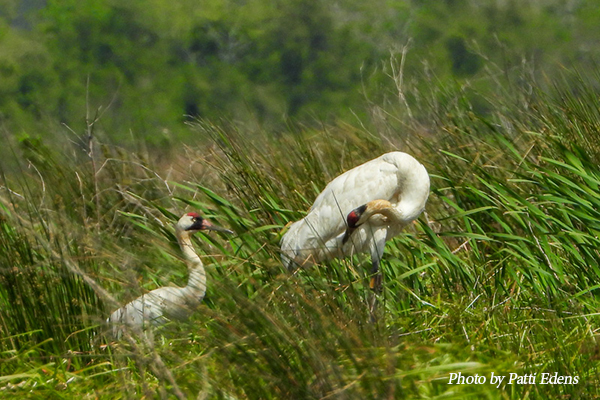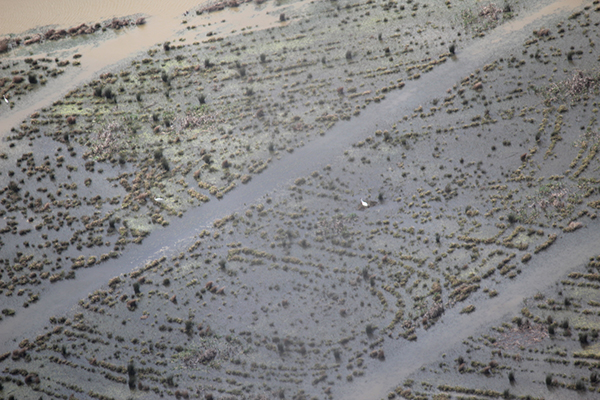
Today, we are excited to share the news of two Whooping Crane nests in eastern Texas. This is the first time Whooping Cranes have been documented nesting in Texas since the early 1900s!
Texas has a wintering population of about 500 Whooping Cranes. Last month, most of those birds migrated north to their breeding grounds at Wood Buffalo National Park in Canada. While occasionally four to six birds from this population might stay in Texas, they have not nested in the state. The nests that hatched last week on private land in Chambers and Jefferson Counties, Texas, are from a population that typically spends all year in Louisiana, referred to by biologists as the Louisiana Non-Migratory Population.
Historically, Louisiana was home to both non-migratory and migratory populations of Whooping Cranes. In the winter, when migratory Whooping Cranes combined with the resident cranes, Louisiana likely had a higher population of Whooping Cranes than any other state. Due to unregulated hunting and wetland loss, Louisiana lost its Whooping Cranes. By 1939 the Whooping Crane population in Louisiana numbered only 13 individuals, and in 1940 a hurricane scattered the remaining population. In 1950, the last remaining individual in the population was relocated to Aransas National Wildlife Refuge on the Gulf Coast of Texas.

In 2011, the Louisiana Department of Wildlife and Fisheries lead the effort to reintroduce this iconic species to Louisiana’s wetlands. The International Crane Foundation has the largest captive flock of Whooping Cranes, and our staff regularly raises Whooping Cranes for release into Louisiana. The first recorded nest for this flock occurred in 2014, and they have nested every year afterward.
The Louisiana population has grown to 73 individuals and now has expanded beyond Louisiana to southeast Texas. Texans and conservation fans around the world are celebrating this historic moment in the recovery of the population and species.
As we celebrate, the International Crane Foundation wants to remind birders, photographers and other nature enthusiasts that Whooping Cranes are a sensitive species. Please do not seek out these nest locations, as too much exposure to humans could disturb the Whooping Crane family and cause unnecessary stress. If you happen to see a Whooping Crane, remember to keep your distance, at least 1,000 feet between you and the birds. Please remember to park safely and in legal areas while viewing Whooping Cranes, and do not trespass on private property or closed areas of public property in an effort to view them.
Read more about the historic nests in Texas. To learn more about Whooping Cranes and the International Crane Foundation’s work to save this species, check out the Whooping Crane species page.
